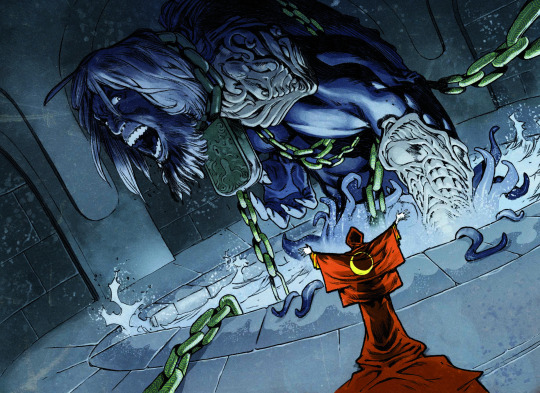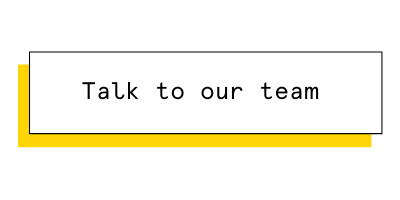Stretch goals are financial targets set above a project creator’s initial funding goal. They’re designed to make better use of excess funds raised in a campaign by offering improvements to projects or providing additional rewards to backers. Including stretch goals in a crowdfunding campaign can be immensely beneficial. For example, they can be used to create additional rewards that may whet backers’ appetites, potentially spurring more financial contributions and giving your campaign more momentum.
“For me, the initial funding goal is the bare minimum at which I can produce the smallest possible work,” Kobold Press founder Wolfgang Baur says. “It doesn’t actually cover my costs.” Baur has successfully raised funds for 17 games on Kickstarter, and has completed several crowdfunding campaigns on other platforms. His most recent tabletop RPG project, The Scarlet Citadel, raised more than four times its $30,000 funding goal with $155,429 total raised.
In his experience, backers find stretch goals to be more palatable than having a higher initial funding goal. “Strangely enough, people don’t believe what the actual costs are,” Baur says. “If I go in and say, ‘A hardcover book in full color, 8.5 x 11 in size with good quality binding and code plates throughout is going to cost $50,000, the audience I have just doesn’t really believe it,” he laughs.
“I could make a much cheaper work, but part of the appeal of Kickstarter and crowdfunded projects is to make something of higher quality than I could without having the capital there at the beginning.”
Possibilities and Pitfalls
Baur uses stretch goals to energize backers and spark greater interest in his projects. “It’s a strategy to say, ‘I’m going to ask for the minimum and spend my time talking about stretch goals,” he explains. “It’s a long 30 days when you’re tracking to keep your backers engaged.”
That said, stretch goals can make crowdfunding campaigns more complicated. The production of extra elements and rewards can create an additional layer of risk in terms of shipping and production costs. The creators of Torment: Tides of Numenera issued an apology to backers after it that some of its campaign’s stretch goals — which were supposed to fund extra features, such as a companion roster and Italian localization — had not been met.
Stretch goals bring in more funds, but they’re also about rewarding your backers. If you bite off more than you can chew and aren’t able to follow through with these rewards, just imagine the damage it could do to your reputation. You probably won’t get many repeat backers for your next campaign if people question your ability to deliver.
Ensuring Stretch Goals Are a Benefit, Not a Hindrance
To avoid setbacks, veteran game creator Jamey Stegmaier advises creators to keep the following guidelines in mind:
Stretch goals should add value: Don’t add these additional rewards because you think it’s something you’re supposed to do or to simply raise more money. Your stretch goals rewards should enhance your project and get backers excited.
Stretch goals should be financially feasible: You shouldn’t have to borrow money from your own pocket to finance the production of stretch goals. You also don’t want to take funds earmarked for the production of the initial rewards you offered.
Stretch goals should be available to every backer: You risk alienating or just confusing backers if only people at the higher pledge levels are eligible for the stretch goals.
Should You Stretch?
Christopher Haskins, owner and head of game development at Nord Games, says that stretch goals should be used with care. While the company’s recent dungeon tile project used stretch goals to add more value to backers’ pledges, an upcoming project — a card game — has no stretch goals at all.
“Stretch goals are really cool for getting people excited and spreading the word about certain project, but there’s not always a need for them,” he says. “It’s not always wise, in my opinion, to force it. When people say they’re going to throw in this and that, you may find that no one really cares about that — they would rather have whatever you’re offering at a good price.”
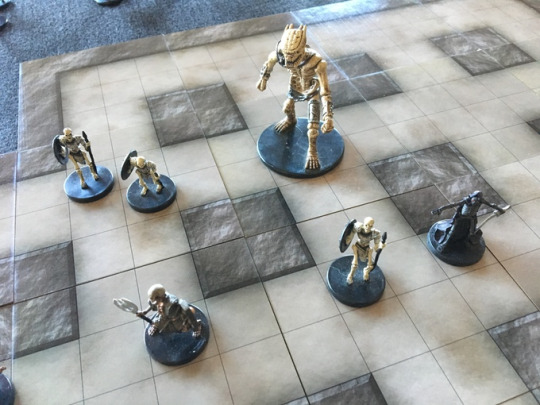
When a project is significantly overfunded, it might be tempting to turn to stretch goals. But Kickstarter urges caution: “Stretch goals trade long-term risk for a short-term gain.” Baur concurs. “The greatest pitfall with stretch goals for me is that I get excited about them and want to promise them even if the funding isn’t there,” he says. He often consults his biggest and most supportive backers about his projects and stretch goals and solicits their feedback. These are typically people who are super backers, who have contributed funds to more than a hundred projects. “Some make concrete suggestions like, ‘You’re offering this thing, which I have zero interest in,’ and I rebuild things based on that feedback,” Baur says.
If projects are overfunded, it may be more prudent to use the windfall in funds to cover any unexpected shipping or manufacturing costs, which are bound to arise during the fulfillment phase, or put funds towards improving the final product for backers. For Haskins’ next project, he’s using any excess in funding to order more units, and to reinvest back into the company for its future endeavors.
“The price gets lower per unit, which helps us out because our profit margins go up and we’re able to be more profitable as a company and invest money back into new projects, research and development, artwork, that kind of thing,” he says. “Beyond that, the remaining amount of money goes to the writers and creators of the product.”
Stretch Goal Alternatives
Add-ons are á la carte items that backers can purchase without changing their pledge or reward level. They give your backers a chance to get items that they may have missed out on during your campaign or that weren’t included in their pledge level. Add-ons also bring in additional funds for creators. So if you want to offer backers something extra, this is an excellent route to take.
The add-ons for Chopsy, a multi-use food preparation station, include food storage pods and cutting boards. These add-ons complement and enhance the original product in the same way that stretch goal rewards typically do.
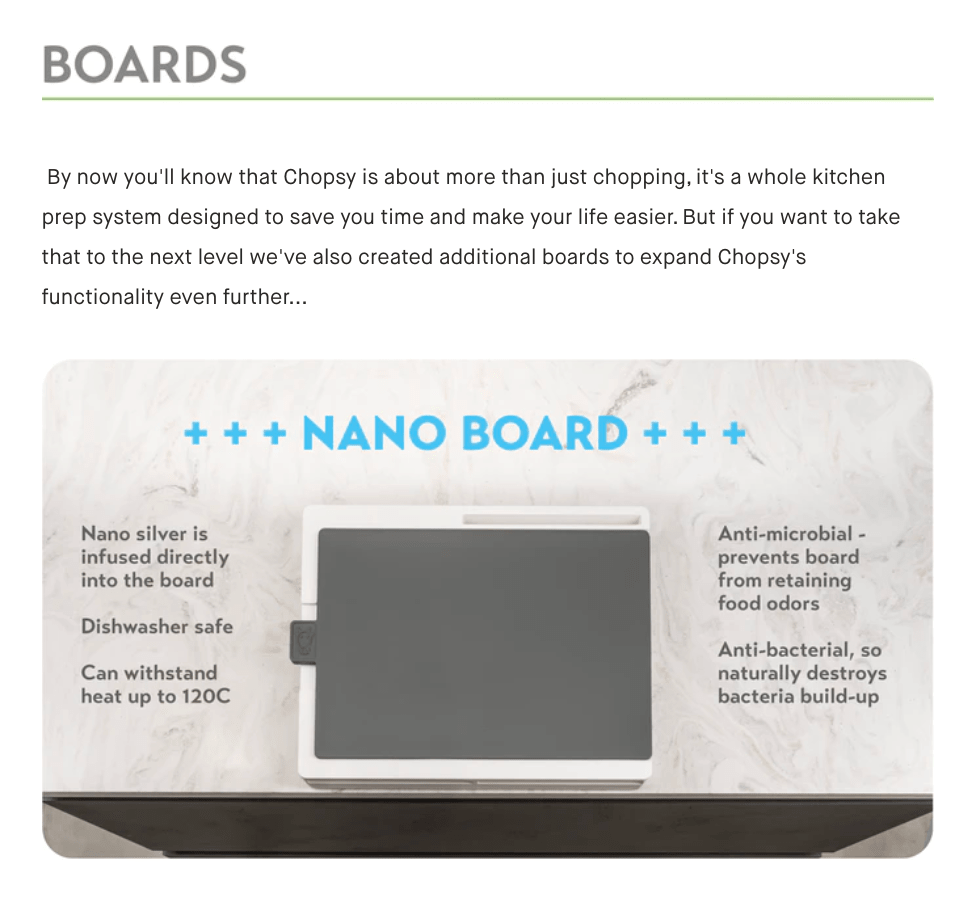
Another option is BackerKit’s add-on stretch goals. This feature allows you to set an “order goal” for an add-on and then run an item-based “stretch goal” campaign. This is a nice alternative for creators who have stretch goal items in mind, but want to gauge interest in that item before committing to producing it. BackerKit add-on stretch goals are best for new standalone items and not replacement items. So for example, a good add-on stretch goal item for a tabletop game would be a new item, such as a miniature, not an alternate cover that backers get to choose from.
What Makes a Good Stretch Goal?
Baur says stretch goals should strike a balance between adding value to a project and satisfying a creator’s artistic vision. His most recent tabletop RPG campaign for The Scarlet Citadel had 19 different stretch goals including character art and player handouts.
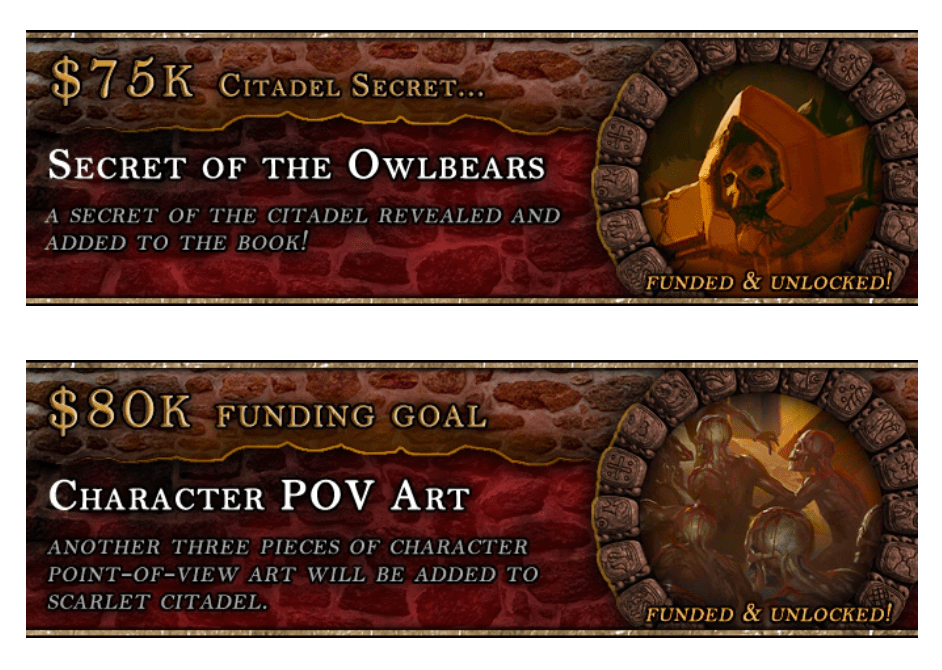
Here are a few more popular stretch goals for tabletop projects:
- Miniatures
- New sculpts for miniatures, tokens, or game pieces
- Cards with upgraded finishes
- Expansion packs
- Higher quality tokens or coins
- Custom dice or dice bags
Common stretch goals for design projects include:
- Livestream with creator to show best practices
- Carrying bags or cases
- Accessories that complement the product (a fitness product could offer towels, water bottles, yoga mats, etc.)
- New color and size options
- New designs and material upgrades
Regardless of what you choose, one of your stretch goals should add a significant amount of value. Stegmaier calls this the “Golden Goose” stretch goal, and says that it should be introduced at the 400% or 500% funding milestone. This type of stretch goal gives your community something to rally around and work to achieve.
Get Your Campaign Ready
Stretch goals aren’t right for every campaign. But if you do decide to use them, make sure that you have them planned out before you launch. With the excitement of your campaign, it could be tempting to add a last-minute stretch goal. However, doing so, could make it more challenging to produce or fulfill rewards. With a plan, hitting those stretch goal milestones will be enjoyable rather than stressful.
Are you preparing to launch a Kickstarter or Indiegogo project soon? Contact BackerKit to learn how you can have your best crowdfunding campaign ever.
